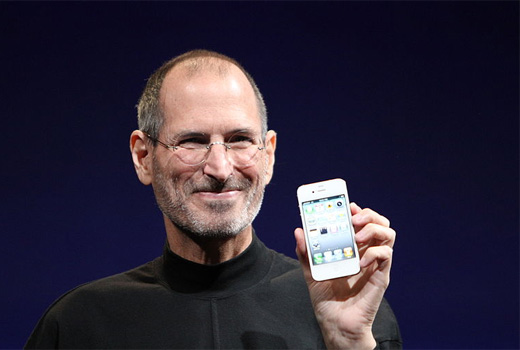
Steve Jobs was one of the greatest brand story tellers of all time.
One of the best and most exciting methods of breathing life into your brand, and adding excitement to your content marketing approach, is storytelling.
While brand storytelling is not a new concept, the growth of social media and content marketing opportunities have given professionals additional platforms for telling their stories—opening the door for storytelling to reach new pinnacles of importance in the big picture of marketing.
A good example of this is Samsung's new Dream Doghouse priced at a sky-high $30,000.
At the bottom of this article is a video where you can see how they share the story of this very product (and got it go viral).
Now, while every organization will use storytelling in a slightly different way, the five tips below can help any entrepreneur engage and connect with their prospects and customers.
1.) Tell True Stories
In brand storytelling, honesty is of the up most importance. While you are crafting stories, they should be firmly based in fact—in the reality of your own brand and industry.
If your brand stories are dishonest, or even inconsistent, they will confuse consumers who will automatically turn away from the brand without even knowing why.
Be creative, but do not move too far from your ultimate promise to your customers.
Honesty is always the best policy, even when you are trying to be a creative storyteller.
2.) Show Off Brand Personality
While a brand story does work towards your ultimate marketing goal, they are not marketing materials and they are not advertisements. Tell your stories with the personality of the brand and the writer in the spotlight.
A boring, salesy story will not attract attention, and it certainly will not retain attention for the long haul. Infuse every word of the story with personality and zest, to achieve something unique.
By doing this, your story will stand out from all of the other advertising campaigns and even the other brand stories out there.
3.) Create Relatable Characters
Any story, including brand stories, has a cast of characters. Create characters that your audience will like and that they can relate to on a personal level.
By creating characters, this does not mean that you have to create a brand mascot or fictional character; you may simply work with buyer personas or even fictional recreations of employees.
Tell stories from a number of different points of view, or even from a third-person point of view to reach different customers.
The most important thing is to create a cast of characters that allow your audience to connect emotionally to your story—perhaps so much that they want to follow the story as it proceeds in the future.
4.) Follow Common Rules of Story Writing
When you were taking an elementary level writing course, you learned that fiction stories should include an introduction, middle and conclusion. Brand stories should be no different.
Use a strong opening to introduce your characters and establish setting. This should capture the attention of your audience and maybe hint at what problems may be faced in the story.
The middle portion of the story should further set up the problem, share all aspects of the conflict and present any potential solutions. This is where the “meat” of the story takes place and where you can draw your audience in and keep them coming back for more.
Finally, the conclusion includes a resolution and perhaps hooks your reader to a “new” story or arc in your brand marketing efforts.
5.) Connect
The best brand stories often use perpetual marketing efforts.
This involves leaving your audience wanting more to keep them coming back for more. Like the movie that leads into the sequel or the promo for the television show that “hooks” watchers into checking out the next episode, draw in consumers and keep them around.
Social media is an excellent tool for this.
Encourage your audience to follow your social media accounts where you can keep them enthralled between storylines. Not only will you have the immediate benefits, but you are building those social media followers—something that will pay off in the long run too!
Like any type of marketing or brand-building effort, providing consumers with a number of brand experiences gives them the best opportunity to find some way of connecting with the brand.
Provide multiple ways to engage with your brand story and you will find consumers are more likely to fall in line with your plans for them.
The Famous “$30,000 Luxury Doghouse”
While most people are trying to earn a decent living, save money and grow their business, others are off spoiling their pets with crazy perks.
From luxury pet hotels in Paris to pet massages and royal portraits, I thought I'd seen it all — until Samsung debuted this $30,000 “Dream Doghouse.”
One of the most extreme dog houses I've ever seen. Its truly amazing…
Think they have a powerful story in place to sell $30k dog houses?

